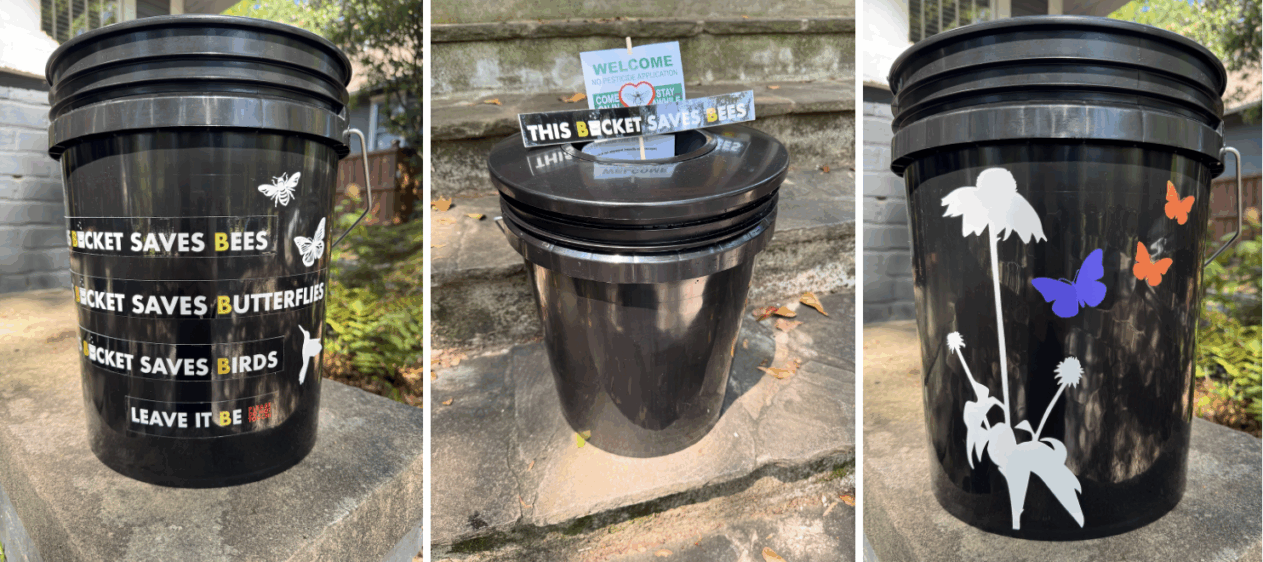
Our buckets are minimal (B-asic) or decorated (Bee-autiful), with native plants and pollinators, and sustainable. And easy and economical! Once installed, they require quick monthly maintenance (no more than 5 minutes!) — just add part of a dunk (about 50 cents per bucket) — and they can be used year after year. If you are concerned about remembering the schedule for replenishing them – don’t worry – we’ll remind you via email.
Mosquito buckets with Bti are the only effective method of mosquito control that is also safe for pollinators and insects, birds, and aquatic life, all of whom are harmed by abatement sprays. Please be wary of the mosquito buckets from pesticide companies, which use a synthetic chemical and harms pollinators. See our recent blog post for more details.
Here is how our buckets work:
Bucket + water + Bti disk + grass + stick (+ monthly maintenance)
Buckets use a mosquito-specific toxin, Bti (Bacillus thuringiensis subspecies israelensis)–a naturally occurring bacterium found in soil and known to kill mosquito larvae; it prevents eggs from developing. Water and grass clippings (or other yard waste) decompose to attract female mosquitoes, who lay eggs in the water. Other insects who may have made their way, inadvertently or not, into the bucket can use a stick to climb out.
All spray applications—even “natural” and “organic”—risk drifting, spreading to unintended areas, nearby plants and lawns, even neighboring yards, consumed and traversed by other creatures, including pets and people. Most abatement spraying or fogging are applying pyrethroids, synthetic chemicals related to BUT NOT pyrethrins, which are derived from chrysanthemum flowers.
Let us be clear: pyrethrins and pyrethroids are not identical. We have experience with local companies claiming their products “green,” that they use “geranium oil” or “botanical spray,” language that suggests sustainability and safety but masks the actual chemical compositions, especially tricky when their terms refer to the sites of application (they typically spray on foundation plants and shrubs), not the components. When in doubt, ask for the Safety Data Sheets.
According to entomologist Doug Tallamy, commercial mosquito sprays–popular, expensive, toxic methods of reduction–only kill about 10% of adult mosquitos. Mosquito buckets eliminate up to 85% of larvae, addressing the problem at its source, in ways much safer and sustainable for all of us.
If you would prefer to make your own buckets, we are offering instructions and sources.
